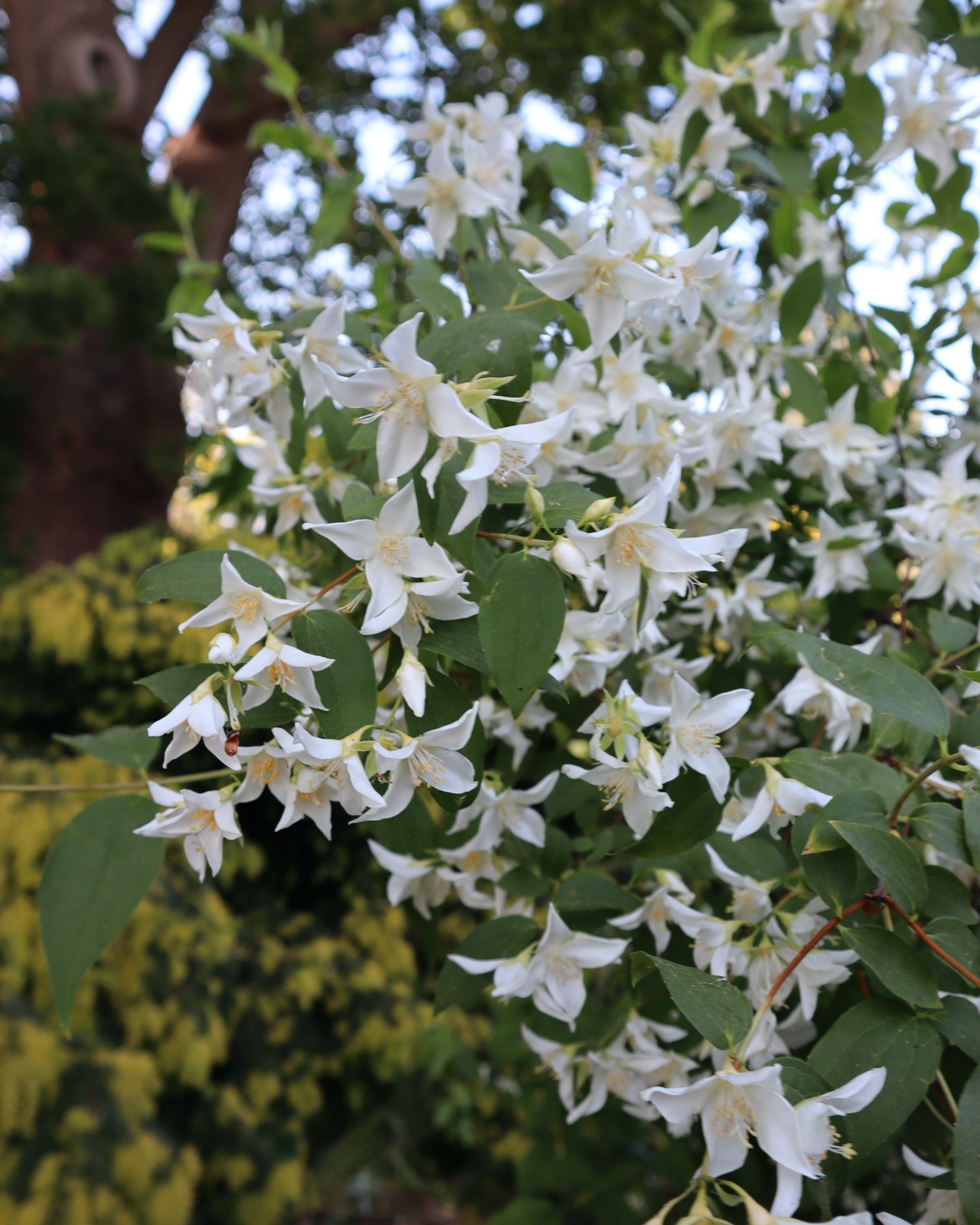Philadelphus 'Falconeri'
Credits
Article from Bean's Trees and Shrubs Hardy in the British Isles
Recommended citation
'Philadelphus 'Falconeri'' from the website Trees and Shrubs Online (treesandshrubsonline.
Genus
Synonyms
- P. falconeri Sarg.
Other taxa in genus
- Philadelphus argyrocalyx
- Philadelphus californicus
- Philadelphus coronarius
- Philadelphus delavayi
- Philadelphus hirsutus
- Philadelphus incanus
- Philadelphus inodorus
- Philadelphus insignis
- Philadelphus lewisii
- Philadelphus magdalenae
- Philadelphus mexicanus
- Philadelphus microphyllus
- Philadelphus pekinensis
- Philadelphus pubescens
- Philadelphus satsumi
- Philadelphus schrenkii
- Philadelphus sericanthus
- Philadelphus: The Hybrids
- Philadelphus tomentosus
- Philadelphus zeyheri
A shrub up to 10 or 12 ft high, forming a dense mass of slender, arching branches, which become a dark purplish brown the second year; young shoots nearly free from down, slightly ribbed. Leaves ovate to ovate-lanceolate, broadly wedge-shaped at the base, slender-pointed, distantly and minutely toothed, 11⁄4 to 31⁄2 in. long, 1⁄3 to 15⁄8 in. wide, glabrous except for a few hairs on the margins and ribs beneath when young. Flowers delicately scented, pure white, 11⁄2 to 2 in. across, produced at the end of twigs 2 to 4 in. long in racemes of three to seven flowers. Petals oblong-lanceolate, 1⁄4 in. wide, slender-pointed; calyx glabrous, except for minute down at the margins of the lance-shaped lobes; styles separated half-way down.
The origin of this mock orange is not known; it was first distinguished in Parson’s nursery at Flushing, Long Island, USA, and is probably a hybrid. It is not one of the best of the genus, and although elegant in habit is shy-flowering, at least in this country. Its long, narrow petals make it one of the most easily distinguished of the genus.

